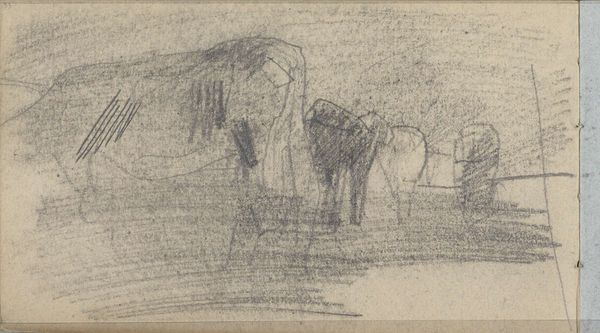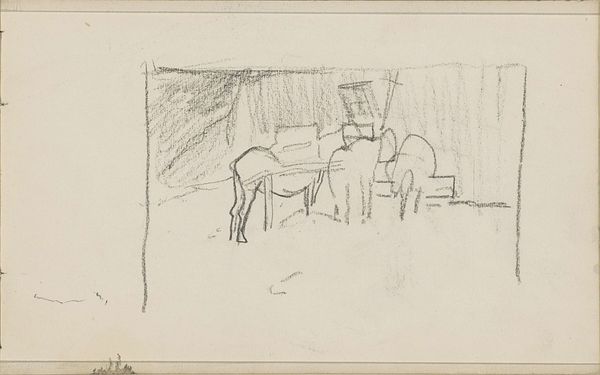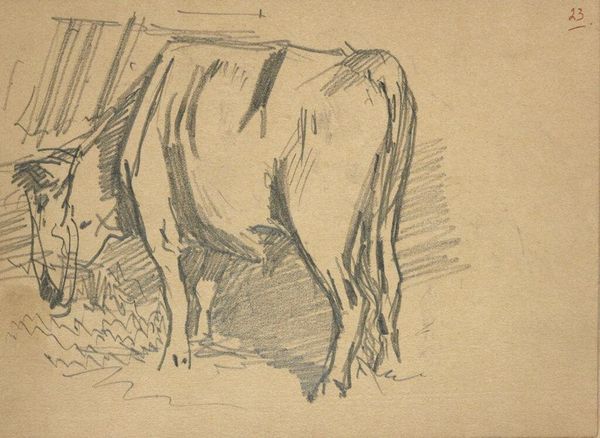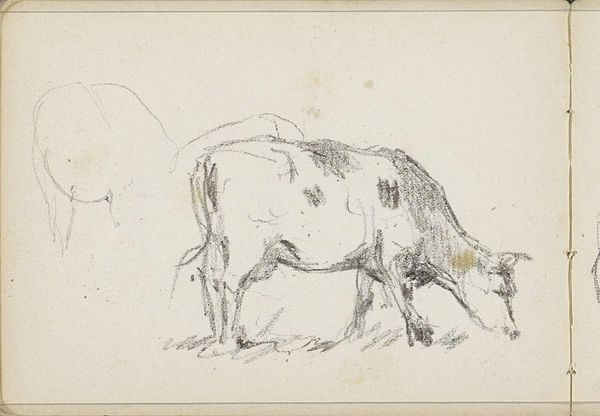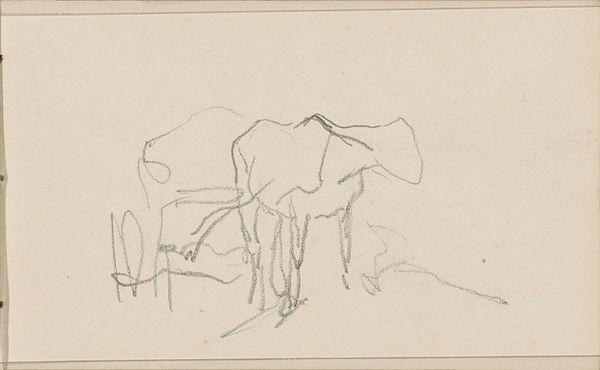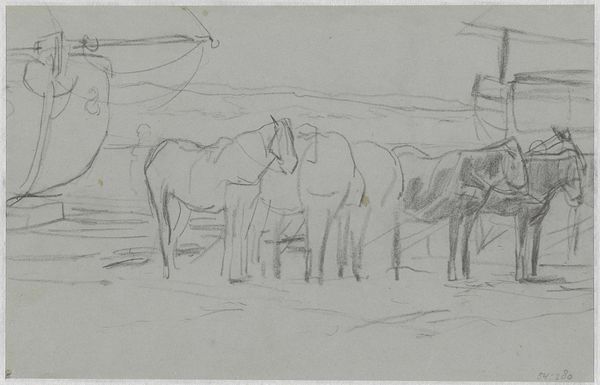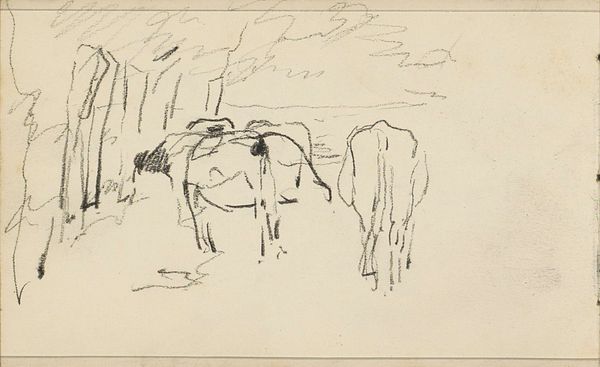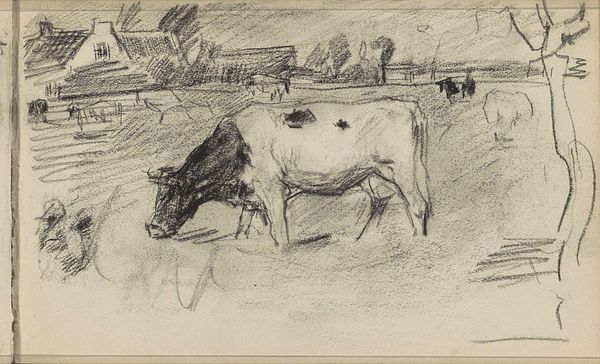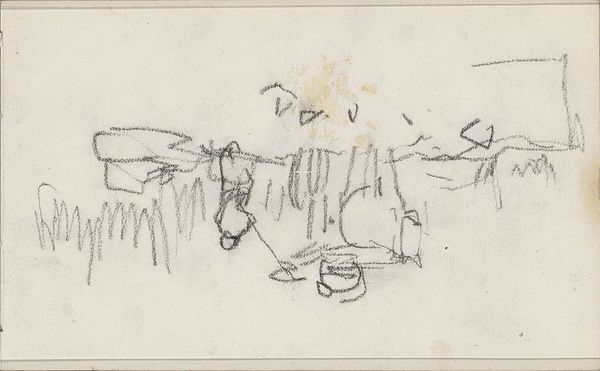
#
amateur sketch
#
light pencil work
#
thin stroke sketch
#
incomplete sketchy
#
personal sketchbook
#
idea generation sketch
#
ink drawing experimentation
#
pen-ink sketch
#
sketchbook drawing
#
initial sketch
Dimensions: height 77 mm, width 167 mm
Copyright: Rijks Museum: Open Domain
Editor: This is "Paard en wagen," or "Horse and Wagon," a pencil drawing by Anton Mauve, made sometime between 1848 and 1888. It feels unfinished, almost ephemeral, like a fleeting moment captured on paper. What do you see in this piece beyond just the initial sketch? Curator: Beyond the visible, this drawing offers a lens through which to examine the labor conditions and social hierarchies of 19th-century agrarian society. Mauve's choice to depict working animals invites us to consider their role not merely as beasts of burden, but as vital contributors to a system often exploiting both human and animal labor. How does this sketch, with its deliberate lack of detail, comment on the realities of rural life? Editor: I hadn’t considered the socio-economic implications. I was focused on the artistic technique, the spare lines suggesting form. So, you’re saying it's more than just a study of form? Curator: Precisely. The incomplete nature of the sketch perhaps speaks to the precariousness of the working class’s existence. This was a time of massive social upheaval; think about the rise of industrial capitalism and the displacement of rural populations. This image asks us: who are the invisible hands, or in this case, hooves, driving the societal machine? Editor: So, the sketchiness isn't just about the artist's process, it's a commentary on social instability? Curator: It could be interpreted as such. The image invites us to consider how art can subtly critique prevailing power structures, even within seemingly simple genre scenes. Think about the animal rights movements during the period and debates around animal labor, and the art begins to speak volumes. Editor: I never thought about sketches having such potential to discuss social issues! I usually see them as preparation or practice. Curator: And sometimes, they become powerful statements on their own. What has resonated most with you about how social awareness interacts with this image? Editor: That a fleeting impression can carry so much historical weight and trigger such interesting ideas about labor and power. I'll definitely look at sketches differently now! Curator: Indeed. Art is so much more than what meets the eye at first glance!
Comments
No comments
Be the first to comment and join the conversation on the ultimate creative platform.

